Surf academic Dr Rob Brander says ‘swim between the flags’ message is now ‘useless’
THE BEACH expert known as “Dr Rip’’ has stunned the lifesaving community with an attack on Australia’s iconic red and yellow patrol flags, declaring them “useless’’ because too many swimmers ignore them.
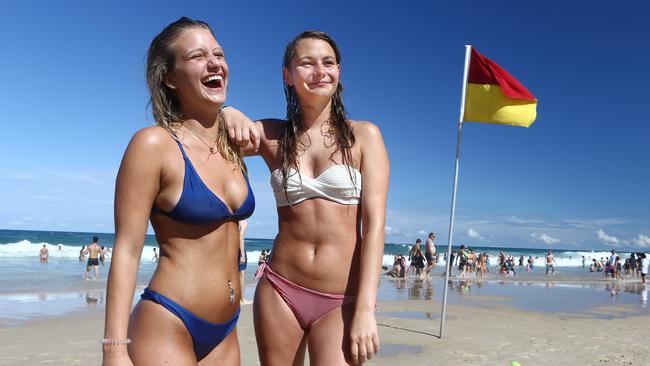
Beaches & Fishing
Don't miss out on the headlines from Beaches & Fishing. Followed categories will be added to My News.
BEACH expert Rob Brander, known as “Dr Rip’’ in surf and academic circles, has stunned the lifesaving community with an attack on Australia’s iconic red and yellow patrol flags, declaring them “useless’’ because too many swimmers ignore them.
“I think it’s lost its effectiveness,” the University of NSW associate professor said of the ‘swim between the flags’ message.
After decades of lifesavers hounding beachgoers with the same mantra, it had become “white noise’’.
“When people stand up and say swim between the red and yellow flags, it’s useless, it’s like a useless message,” Dr Brander said yesterday.
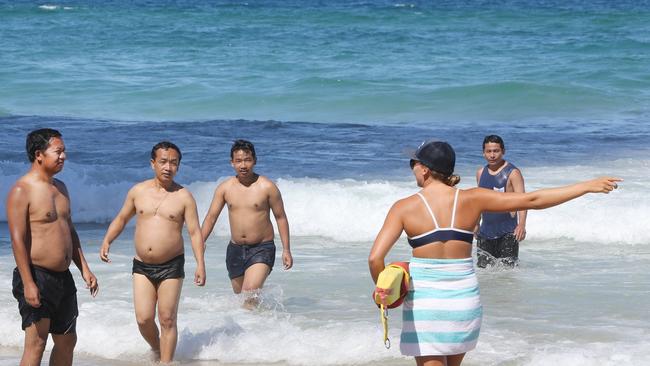
He said swimmers should be taught about the dangers of rips because just 4 per cent of Australia’s 11,000 beaches had flags.
“We’re not really very good at telling people what’s outside the red and yellow flags — and it’s mostly rips,” Dr Brander said.
Surf Life Saving Queensland figures reveal that 22 of the 77 drowning deaths in Queensland over the past decade have occurred just 200m from a patrolled beach.
Rips are the biggest killers at beaches.
But Surf Life Saving Queensland has not recorded any beach-related drowning deaths between the flags.
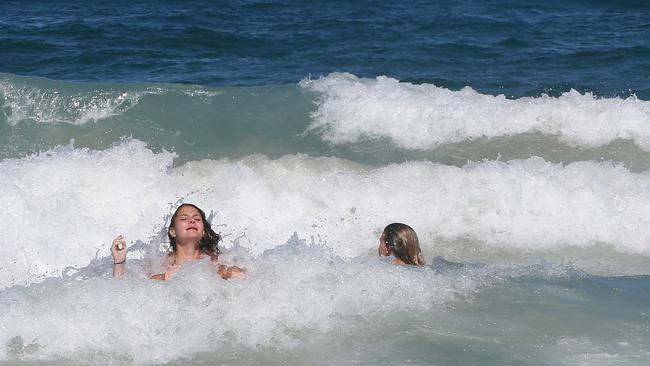
In a study released in 2013, Dr Brander had found rip currents killed more people on average than cyclones, bushfires, cyclones and shark attacks. The average number of deaths in rips per year had been 21, followed by 7.5 in cyclones, 5.9 in bushfires and just one for sharks.
Dr Brander said yesterday a new approach was needed because of such statistics.
“It’s a controversial statement but I think it’s a discussion we need to have,” he said.
“We know people aren’t swimming between them and there are so many beaches that are unpatrolled and they’re easy to get to.
“You can’t stop people from swimming and people don’t read signs, and you’ve got to have the mindset of beachgoers.
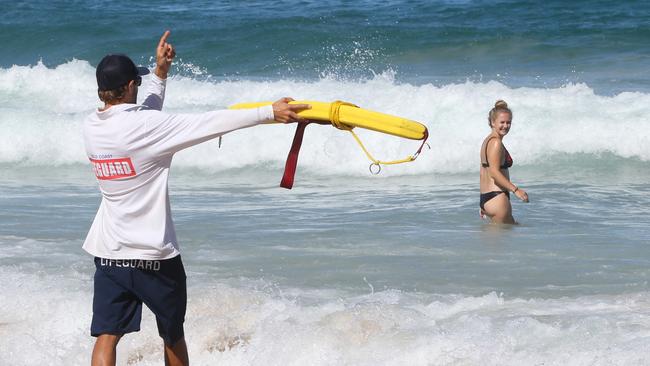
“When you go to the beach safety isn’t priority number one, their priority is having a good time.”
Yesterday the Bulletin witnessed scores of swimmers who could not be bothered walking just a few hundred metres to swim in the patrolled areas.
It was just three days after the Christmas Day drowning death of international student Ravneet Singh Gill, 22, at Duranbah beach just south of Point Danger.

This was also despite the Gold Coast having one of the most heavily patrolled coastlines in the country with 38 lifeguard towers, of which 25 are manned year round.
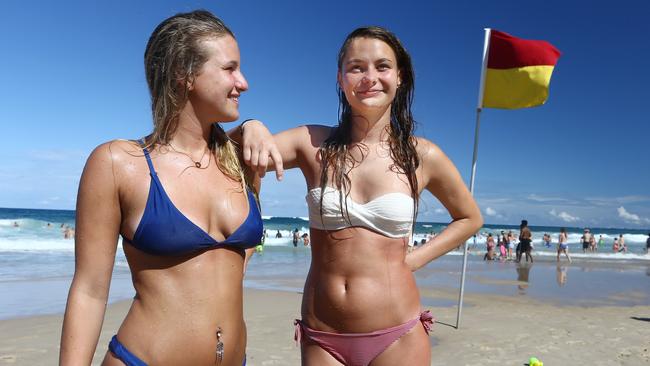
There are also 22 surf life saving clubs patrolling on weekends and public holidays from September until May.
SLSQ watches over some beaches from dawn until after dusk during the peak summer period.
Dr Brander said the situation was worse in northern NSW and other regions.
“Think of Tallows Beach near Byron Bay. It’s a huge beach with accommodation along the whole beach but there’s no flags,” Dr Brander said.
“No one is going to drive 10km from their holiday house to go to a beach that’s got flags. It’s not realistic. They’re going to swim at the beach out the front.”
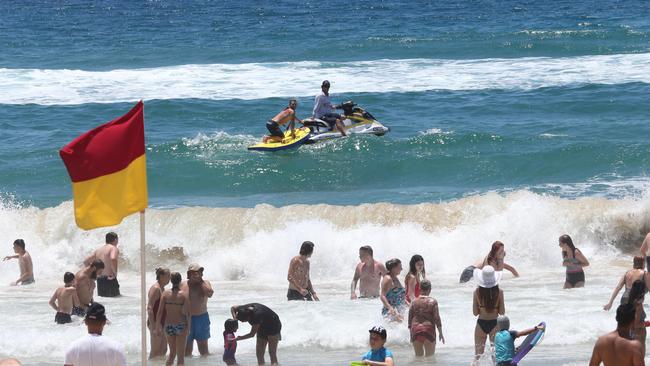
SLSQ warned lives would be at risk if the “swim between the flags” message was changed.
State communications operations co-ordinator Tim Wilson said Dr Brander was wrong to say the flags message was not working.
“If you look at the statistics, there are more rescues outside the flags than inside the flags,” Mr Wilson said.
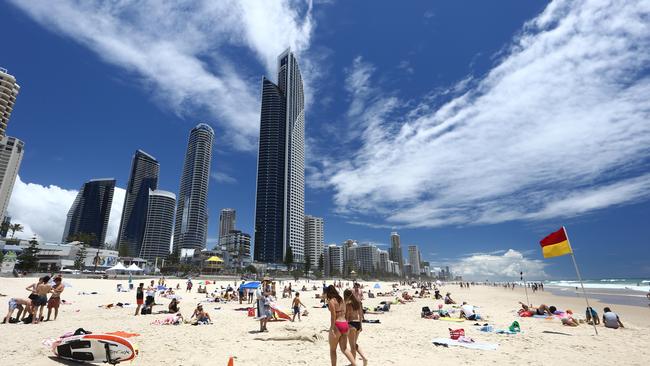
He agreed with Dr Brander that more people should learn how to spot a rip current, but he said it took a long time for people to learn to spot rips.
“It’s a lot easier to get everyone swimming between the red and yellow flags,” Mr Wilson said.
“Between the flags is where we want people to swim. It’s a lot safer.”
Surf Life Saving NSW spokesman Scott Cunningham said rips were the biggest killer in the surf and it was vital beachgoers only swam at patrolled beaches.
“I would agree that rips are the number one problem,” Mr Cunningham said.
“But what’s really important to us is that the swim between the flags message is out there because we know that’s the safest place to swim.”
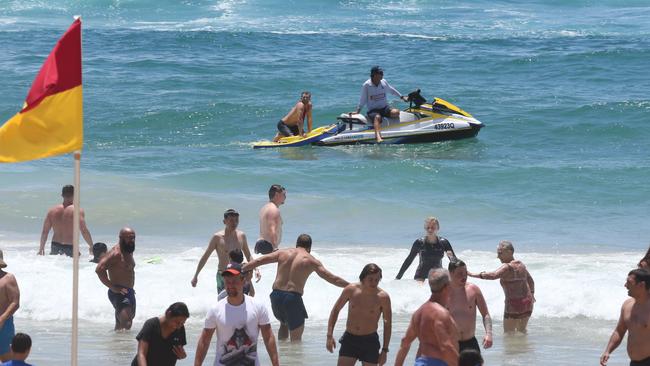
Why tourists swim outside the red and yellow flags
TOURISTS are choosing to swim outside the flags to avoid overcrowding on Gold Coast beaches.
But the decision is causing many to get into difficulty in the water, with lifeguards at Surfers Paradise beach kept busy yesterday helping swimmers caught in a heavy swell.
A lifeguard sounded the siren to order a group of Burmese tourists back to shore after they took a dip outside the flags around 2.40pm.
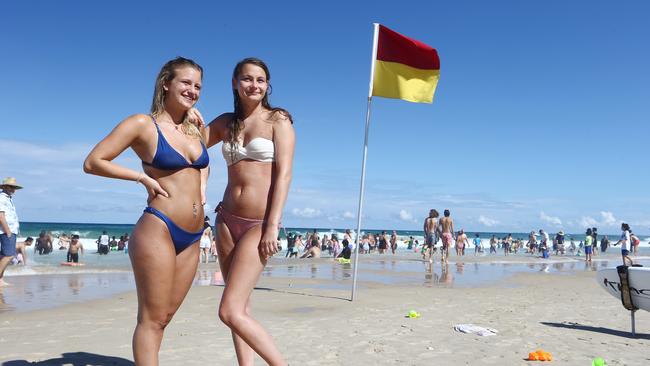
Shortly before that the same lifeguard signalled to two Chinese nationals to get out of the water. They could barely make it back to shore due to the powerful waves trying to suck them out to sea.
“I just wanted to have a play,” one of the young Chinese men said.
“I will swim between the flags in future. It was dangerous.”
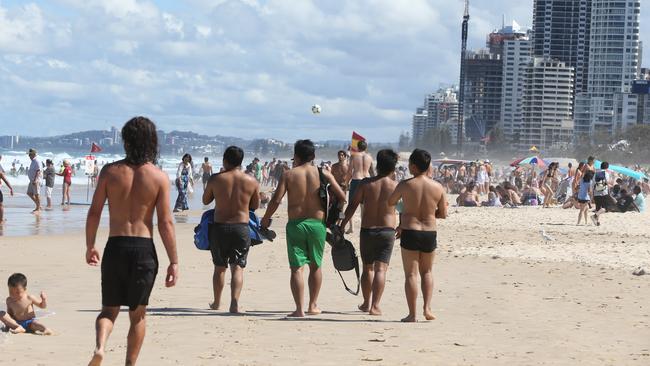
German tourists Ida Jaensch, 19, and Charlotte Gerhards, 20, told the Gold Coast Bulletin they knew they were meant to swim between the red and yellow flags.
But they believed it was safer to swim outside the flags due to overcrowding.
“We are decent swimmers and we’re used to waves, so we’re fine,” Miss Gerhards said.
“It’s so busy there (between the flags),” Miss Jaensch added.
“We’re still close to them if something happens.
“There’s too many people ... it’s not fun if you walk in the water and touch everybody.”
Email: nicholas.mcelroy@news.com.au.
